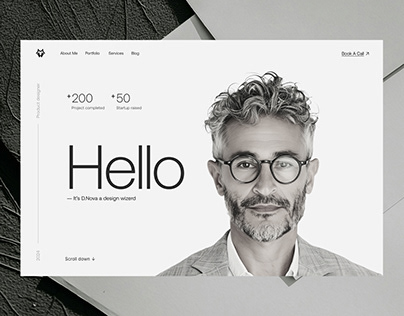Leading Tips for Creating an Impactful Website Design That Converts
To accomplish this, one have to take into consideration a variety of aspects, consisting of comprehending the target audience, prioritizing individual experience, and optimizing for mobile platforms. The tactical use of engaging call-to-actions and a distinct visual pecking order plays an essential duty in guiding individuals with their journey.

Understand Your Target Target Market
Comprehending your target audience is essential to effective website layout, as it lays the groundwork for developing an appealing user experience. Recognizing who your individuals are, including their demographics, choices, and habits, makes it possible for developers to tailor the internet site's web content, design, and functionality to fulfill details requirements.
Carrying out comprehensive marketing research is important in this procedure. Studies, interviews, and analytics can give important insights into individual expectations and discomfort points. By compiling this information, designers can produce customer identities that represent different segments of the target market, making certain that layout choices are notified and appropriate.
In addition, understanding the target audience helps in choosing proper layout aspects such as color systems, typography, and images that resonate with customers. An internet site that speaks directly to its audience cultivates a feeling of connection and count on, urging longer visits and greater conversion rates.
Ultimately, a user-centered strategy to web site layout not just improves individual fulfillment but likewise sustains business purposes by driving interaction and commitment. By focusing on the demands and choices of the target market, an internet site can efficiently serve its function and accomplish desired end results.
Prioritize Customer Experience
To improve the overall effectiveness of a site, prioritizing customer experience (UX) is necessary (Website Design). A well-designed UX makes certain that site visitors can navigate the site effortlessly, locate info swiftly, and involve with content meaningfully. This results in boosted user contentment and higher conversion rates
Begin by implementing user-friendly navigating. Menus ought to be rationally structured, allowing customers to locate vital areas of the website with minimal effort. Uniformity in style components, such as color systems and typefaces, promotes experience, which is vital for preserving customer involvement.
Additionally, consider the packing rate of your site. A delay of simply a few seconds can result in significant drop-offs, as users are much less most likely to await a slow-loading page. Enhancing pictures and optimizing code can boost efficiency and keep site visitors.
By prioritizing individual experience, you not just develop an extra enjoyable setting for site visitors but additionally strengthen your brand name's integrity. Ultimately, an emphasis on UX is an investment in the long-lasting success of your site.
Enhance for Mobile Instruments
Maximizing for smart phones is important in today's electronic landscape, where an increasing variety of customers gain access to websites through smartphones and tablets. A mobile-friendly style not only improves individual experience but likewise plays a considerable role in boosting online search engine rankings. To accomplish this, it is necessary to adopt a responsive design that instantly gets used to various display sizes and orientations.
Packing rate is another crucial variable; mobile individuals are normally less client and anticipate quick accessibility to details. Enhance pictures and utilize internet browser caching to boost efficiency. Examination your site on multiple gadgets and screen resolutions to identify and remedy any prospective functionality problems. By prioritizing mobile optimization, you ensure that your web site remains competitive and efficiently involves a wider audience.
Use Engaging Call-to-Actions
A web site's effectiveness commonly depends upon its capability to direct site visitors toward preferred activities, making engaging call-to-actions (CTAs) essential elements of layout. CTAs function as the essential points that direct users to involve with the site, whether that suggests making a purchase, enrolling in a newsletter, or downloading and install a source.
To develop reliable CTAs, clearness is vital. Use succinct language that clearly connects the action you want the customer to take.
In addition, the design of CTAs ought to stand apart without being meddlesome. Utilize contrasting shades and clear fonts to guarantee they catch focus. Additionally, take into consideration making use of directional signs, such as arrows or images, to lead users towards these buttons. By concentrating on these components, organizations can considerably enhance user interaction, driving conversions and eventually accomplishing their website's objectives.
Concentrate On Visual Pecking Order
Effective web site design counts heavily on a well-structured aesthetic power structure that overviews individuals with content seamlessly. By arranging components in a manner that focuses on details, designers can improve user experience and assist in decision-making. This involves using size, shade, contrast, and spacing purposefully to accentuate one of the most crucial elements of a page.
The usage of larger fonts for headings and subheadings develops a clear distinction between different areas, permitting customers to check content effortlessly. Additionally, employing contrasting shades for switches and calls-to-action can capture individual interest and encourage interaction. Whitespace is another vital element; it stops mess and enables individuals to concentrate on key messages without diversions.
Pictures and graphics ought to enhance the text while additionally sticking to the established power structure, reinforcing the overall message (Website Design). Uniformity in style components, such as color pattern and typography, further strengthens the aesthetic pecking order, making navigation instinctive

Final Thought
In verdict, efficient site layout demands a thorough understanding of the target audience, prioritization of customer experience, and mobile optimization. basics The tactical use of compelling call-to-actions and a distinct aesthetic hierarchy further improves individual engagement. By applying these principles, sites can accomplish higher conversion rates, making certain that layout elements not only attract visitors but also facilitate smooth navigating and interaction. Ultimately, a well-executed web site layout works as a vital part in driving individual actions and accomplishing organization purposes.